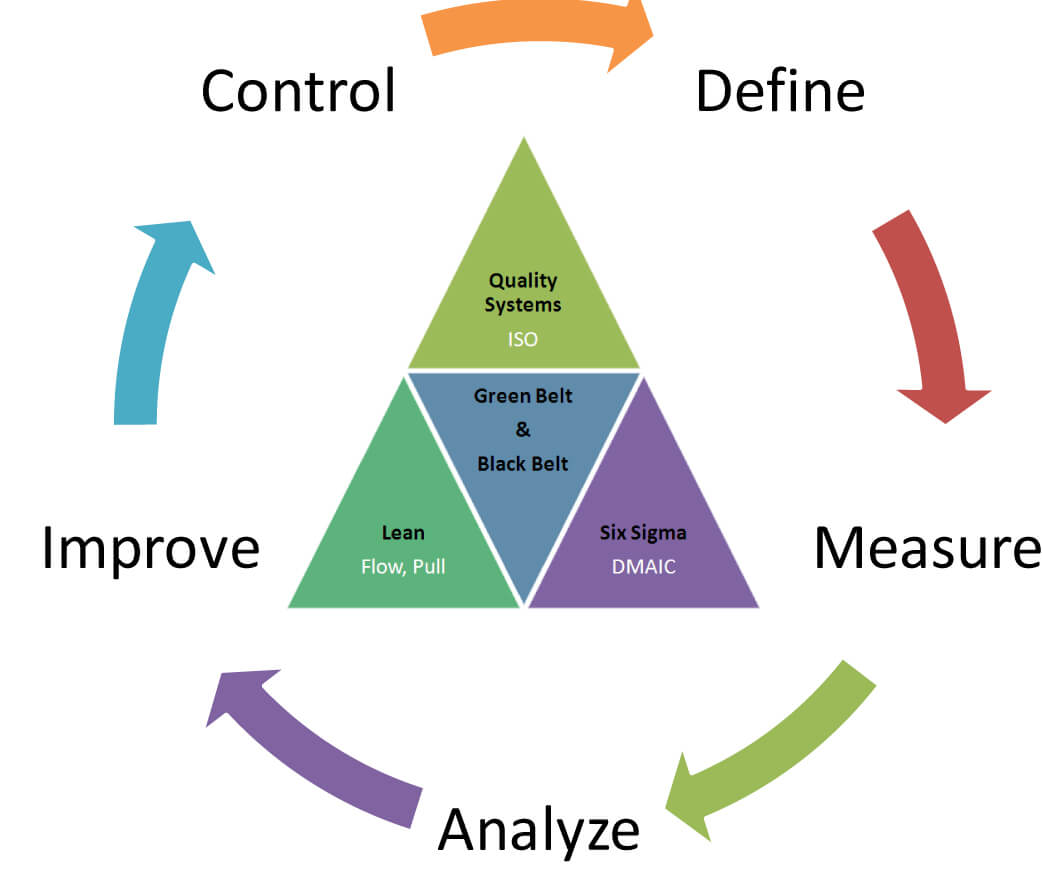CERTIFIED LEAN SIX SIGMA GREEN BELT PROGRAM
- Weekdays
- Classroom Sessions
- 3 Months
- Weekdays
- Online Sessions
- 3 Months
The Six Sigma Green Belt Training Course provides in-depth knowledge of Lean Six Sigma tools, statistical analysis, and process optimization techniques. Learners will gain expertise in process mapping, root cause analysis, control charts, hypothesis testing, and Failure Mode and Effects Analysis (FMEA). This course also covers Lean methodologies, helping professionals eliminate waste, reduce variation, and improve overall business performance.
By completing this training, participants will be prepared to lead Six Sigma projects, support Black Belt professionals, and apply Six Sigma principles in real-world scenarios.
Why Choose Our Six Sigma Green Belt Training?
- Industry-Recognized Certification – Get trained by certified Six Sigma experts.
- Hands-On Learning – Work with real-world case studies and Six Sigma tools.
- Covers Lean & Six Sigma Principles – Master DMAIC methodology and statistical techniques.
- Practical Application – Use Minitab, Excel, and Python for Six Sigma analysis.
- Flexible Learning Options – Choose between live instructor-led training, self-paced learning, and corporate training.
- Career Advancement – Enhance your problem-solving skills, leadership abilities, and process improvement expertise.
- Exam Preparation Support – Get access to practice tests, quizzes, and exam guidance.
Who Should Learn Six Sigma Green Belt Training?
- Quality Analysts & Process Improvement Specialists optimizing business processes.
- Operations & Manufacturing Professionals reducing defects and improving efficiency.
- Project Managers & Business Analysts leading Six Sigma projects.
- IT & Software Engineers applying Six Sigma in development and support.
- Healthcare & Service Industry Professionals enhancing service quality and patient care.
- Finance & Banking Professionals improving risk management and cost reduction.
- Anyone preparing for Six Sigma Green Belt Certification to boost their career.
What You Will Learn in Six Sigma Green Belt Training
- What is Six Sigma & Why It’s Important?
- Lean vs. Six Sigma – Key Differences & Benefits
- Understanding Six Sigma Belts & Certifications
- How Green Belts Support Process Improvement
- Collaboration with Black Belts & Project Teams
- Project Selection & Data-Driven Decision Making
- Define – Problem Identification, Project Charter, & SIPOC Diagrams
- Measure – Data Collection, Process Mapping, & Measurement System Analysis
- Analyze – Root Cause Analysis, Hypothesis Testing, & Statistical Process Control
- Improve – Implementing Solutions, Kaizen, & Lean Tools
- Control – Sustaining Improvements, Control Charts, & Process Standardization
- Pareto Analysis, Fishbone Diagrams, FMEA
- Regression Analysis, Control Charts, and Process Capability (Cp, Cpk)
- Using Minitab, Excel & Python for Data Analysis
- Manufacturing – Reducing Defects & Cycle Time Improvement
- Healthcare – Enhancing Patient Safety & Reducing Medical Errors
- IT & Software – Process Automation & Quality Assurance
- Finance – Fraud Prevention & Cost Optimization
- Practice Tests, Quizzes & Real-World Case Studies
- Exam Strategies & Mock Tests
- How to Pass the Six Sigma Green Belt Certification Exam?

Course Curriculum
- Project Scope Management
- Project Time Management
- Project Cost Management
- Stakeholder Management
- Communication Management
- Risk Management
- DMADV – Define, Measure, Analyse, Design, Verify
- IDOV – Identify, Design, Optimize, Verify
- Identify CTQs
- Creating the risk management plan
- Identify the technique used for plan risk management process
- Identify sections of risk management plan
- Recognize the principles of risk tolerance, probability and impact
- Inputs to risk planning
- Beyond customer requirements – identifying ‘‘delighters’’
- Using AHP to determine the relative importance of the CTQs
- Five Checksheets
- Seven Quality Management tools
- Measurement System Analysis
- Gage R & R
- Discrimination
- Stability
- Bias
- Repeatability
- Reproducibility
- Linearity
- Gage Study and Kappa Statistic
- Measurement Plan
- Using customer demands to make design decisions
- Using weighted CTQs in decision-making
- Pugh concept selection method
- Hypothesis Testing including both parametric & Non-parametric tests
- Mann-Whitney test
- Mood’s Median test
- Kruskal-Wallis test
- Regression techniques
- Linear Regression
- Logistic Regression
- Poisson Regression
- Binomial Regression
- Negative Binomial Regression
- Zero-Inflated Poisson / Zero-Inflated Negative Binomial Regression
- Predicting CTQ performance
- Process simulation
- Virtual DOE using simulation software
- Design phase cross-references
- Nested Designs and change variables
- Mixture Designs
- Main Effect plots and interaction plots
- Fold-over design
- Pilot run
- Pre-pilot
- Post-pilot
- Transition to full-scale operations
- Verify phase cross-references
- All aspects of control phase of DMAIC
Certification
Upon successful completion of the training, participants will receive a Course Completion Certificate from Techtroma. This certification validates your skills and knowledge in Data Science, making you industry-ready. Please note that this is not a vendor-specific certification but a recognition of your learning from Techtroma.
